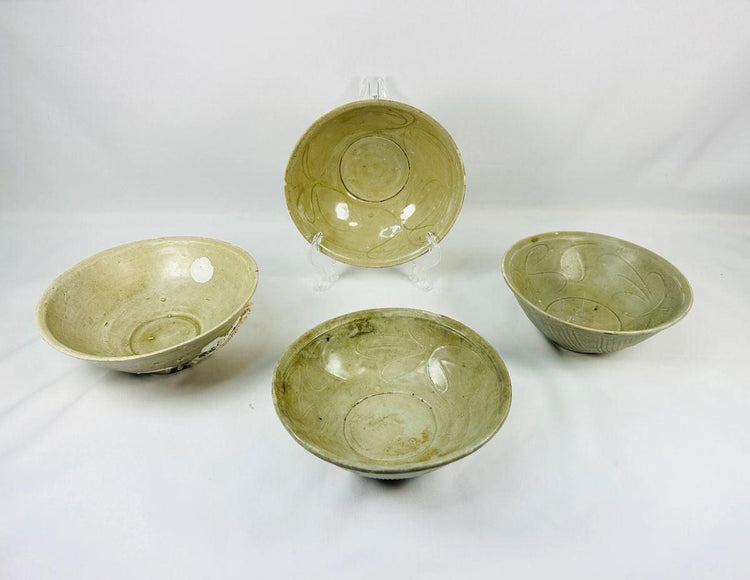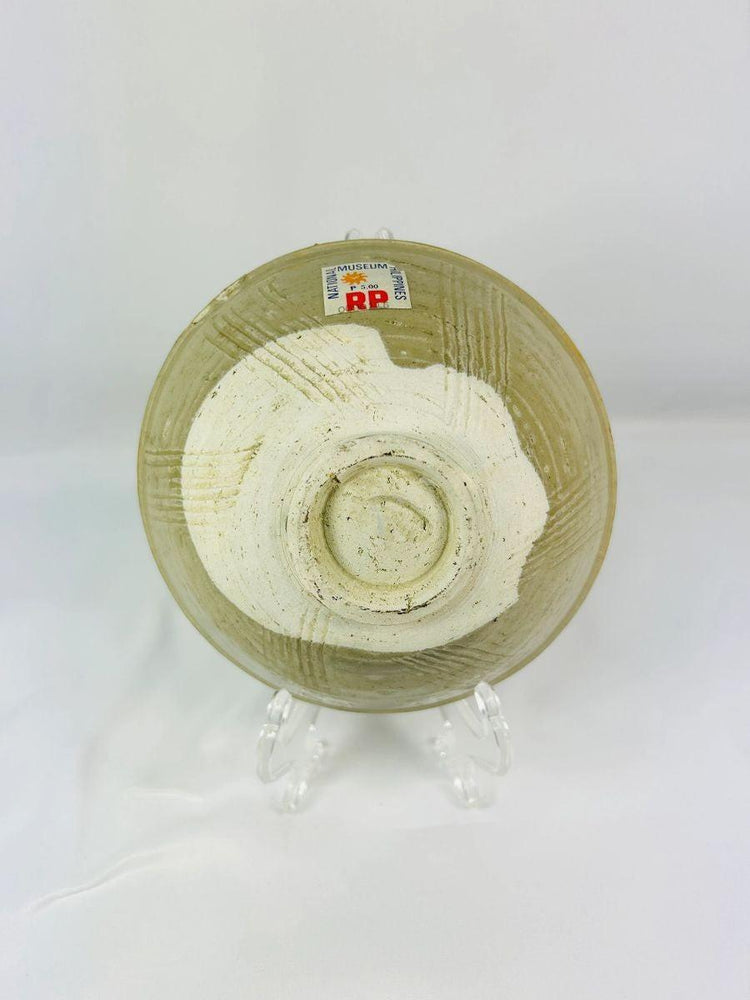Four Song Celadon Ware Bowls | Fujian Province, Circa | 12th Century
Description
More
Less
Historical Context & Origin
Region: China (recovered from Jepara Shipwreck, Central Javan coast)
Material: Celadon-glazed terracotta with incised decoration
Period: Song Dynasty, 12th Century CE
Description
This set of four Song Celadon Ware bowls reflects the elegance and craftsmanship of Song-era ceramics. Each bowl is heavily potted and finished with a transparent celadon glaze, producing a soft green hue with subtle tonal variations. The interiors are decorated with incised floral motifs, while the exteriors display linear incising, leaving the bases unglazed to reveal the natural clay body.
Features
- Transparent celadon glaze with subtle tonal variation
- Incised floral decoration on the interior
- Linear exterior incising with unglazed foot rings
- Heavily potted construction for durability and daily use
- Barnacle and mussel accretions from centuries of submersion
Cultural Significance
Celadon wares from the Song Dynasty are among the most refined examples of Chinese ceramic traditions. They were highly prized both domestically and abroad, with vast quantities exported throughout Asia. The Jepara Shipwreck, discovered off the coast of Java, contained over 10,000 ceramic pieces, providing invaluable insight into maritime trade routes linking China with Southeast Asia. This set of bowls embodies the cross-cultural exchanges and commercial networks that defined the period, while their decoration reflects the Song dynasty’s balance of functionality and understated beauty.
Condition
The bowls remain well-preserved with glaze and decoration intact. Marine accretions—including barnacles and mussels—attest to their long submersion and reinforce their maritime provenance. One bowl bears a label from the National Museum of the Philippines, confirming its documented recovery and enhancing its provenance.
Dimensions (approximate)
Diameter: 6.75 in
Height: 2.75 in
Age
800–900 years old (12th Century CE)
Learn More
Read More About Celadon and The Song Dynasty at The Bowers Museum
Explore Our Collection of Ancient Chinese Artifacts
Description
Historical Context & Origin
Region: China (recovered from Jepara Shipwreck, Central Javan coast)
Material: Celadon-glazed terracotta with incised decoration
Period: Song Dynasty, 12th Century CE
Description
This set of four Song Celadon Ware bowls reflects the elegance and craftsmanship of Song-era ceramics. Each bowl is heavily potted and finished with a transparent celadon glaze, producing a soft green hue with subtle tonal variations. The interiors are decorated with incised floral motifs, while the exteriors display linear incising, leaving the bases unglazed to reveal the natural clay body.
Features
- Transparent celadon glaze with subtle tonal variation
- Incised floral decoration on the interior
- Linear exterior incising with unglazed foot rings
- Heavily potted construction for durability and daily use
- Barnacle and mussel accretions from centuries of submersion
Cultural Significance
Celadon wares from the Song Dynasty are among the most refined examples of Chinese ceramic traditions. They were highly prized both domestically and abroad, with vast quantities exported throughout Asia. The Jepara Shipwreck, discovered off the coast of Java, contained over 10,000 ceramic pieces, providing invaluable insight into maritime trade routes linking China with Southeast Asia. This set of bowls embodies the cross-cultural exchanges and commercial networks that defined the period, while their decoration reflects the Song dynasty’s balance of functionality and understated beauty.
Condition
The bowls remain well-preserved with glaze and decoration intact. Marine accretions—including barnacles and mussels—attest to their long submersion and reinforce their maritime provenance. One bowl bears a label from the National Museum of the Philippines, confirming its documented recovery and enhancing its provenance.
Dimensions (approximate)
Diameter: 6.75 in
Height: 2.75 in
Age
800–900 years old (12th Century CE)
Learn More
Read More About Celadon and The Song Dynasty at The Bowers Museum
Explore Our Collection of Ancient Chinese Artifacts
You May Also Like














